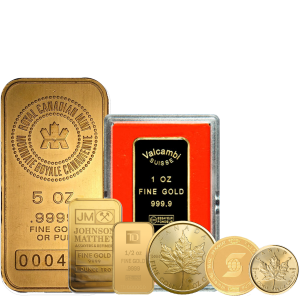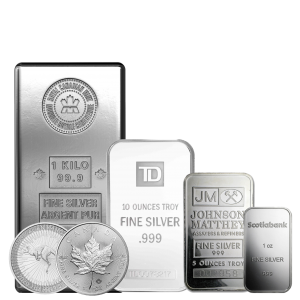

Back
How the U.S. Dollar Affects Global Precious Metal Prices
June 23, 2025
Currency Fluctuations and Their Impact on Precious Metal Prices
Precious metal prices constantly shift due to global supply and demand, economic conditions, and currency values. For investors and bullion buyers, understanding how currency—especially the U.S. dollar—affects metal pricing is essential for making informed decisions.
Why Precious Metals Are Priced in U.S. Dollars
Globally, gold and silver are priced in U.S. dollars using international benchmarks such as the LBMA (London Bullion Market Association) and COMEX. This means the spot price is consistent worldwide, from gold coins in Canada to silver bars in the UK or gold kilo bars in Dubai. While the U.S. dollar sets the pricing standard, local premiums, taxes, and market demand can influence final retail prices.
The Inverse Relationship: USD and Precious Metals
Precious metals generally have an inverse relationship with the U.S. dollar:
- • When the U.S. dollar strengthens, the price of gold and silver typically falls, making them more expensive in other currencies and reducing demand.
- • When the U.S. dollar weakens, metal prices often rise, as investors seek protection from currency devaluation.
This behavior makes precious metals a strategic hedge during times of currency volatility and inflation.
Gold as a Hedge Against Inflation and Economic Instability
Gold is often used as a safeguard against inflation and declining currency values. When central banks increase money supply or lower interest rates, paper currencies may lose value—yet gold tends to hold its worth. This makes gold a favored asset during periods of economic uncertainty.
A Real-World Example: 2022–2024 Trends
From 2022 to 2024, several global factors influenced both the U.S. dollar and precious metals:
- • Surging inflation rates
- • Rising interest rates set by the Federal Reserve
- • Global geopolitical tensions and failing financial institutions
These events led to increased demand for precious metals as a hedge and safe-haven investment, driving price fluctuations.
Reducing Risk with AU Bullion
As a trusted bullion dealer, AU Bullion offers valuable tools and services to support your investment decisions:
- • Live pricing for gold , silver, platinum, and palladium
- • Currency conversion tools for easier price comparisons
- • Timely alerts and notifications for ideal buying opportunities
- • A diverse inventory from renowned global mints including Valcambi, the British Royal Mint, the Perth Mint, and others
Stay informed, minimize risk, and build your portfolio with confidence through AU Bullion.










